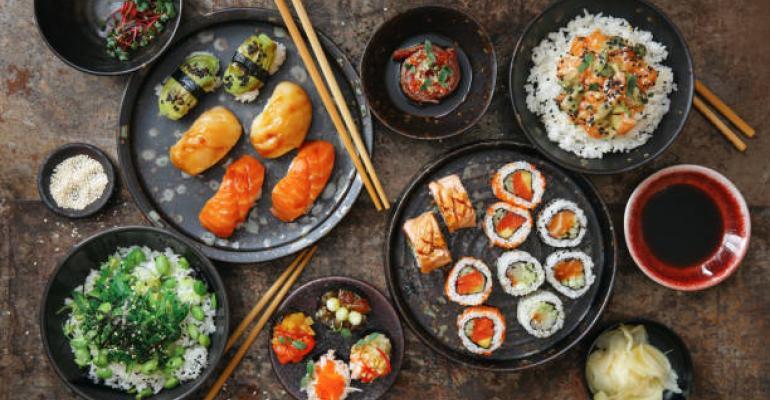Japan’s food culture has long been associated with artisanal craftsmanship, so it should come as no surprise that consumers around the world are embracing the country’s culinary traditions.
Kim Severson, national food correspondent at The New York Times, moderated the webinar. “Japanese food is the cuisine all the other cuisines most want to hang out with,” she wrote in an article last year.
Following are three takeaways from the webinar for industry professionals seeking to delve into Japanese cuisine, and benefit from its time-tested traditions:
1. Explore Japanese ingredients
Robbie Felice, co-founder and chef
Ponzu gives the dish “a super punch of acidity,” said Felice. “It really defines what Wafu Italian is—you use an ingredient like ponzu and keep it super simple.”
Andrew Hunter,
“I wanted people to understand that when they put this in their mouth, they were not going to be eating a traditional arancini, flavor-wise,” he said.
2. Embrace Japanese culinary traditions
Japanese culinary traditions extend well beyond the ingredients used, however, and employ practices such as fermentation and grilling. The Japanese process of fermentation, for example, can point to a rich history, and often features koji, a fungus used as a starter for fermented products such as
Angel Barreto, chef-partner at Anju, a Korean restaurant in Washington, D.C., has been exploring the use of koji in aging meats. For example, he employs koji to dry-age duck breast “to get that funky flavor,” and serves it with hand-cut noodles.
He noted that the attention to detail and craftsmanship that are pervasive in Japanese cooking traditions also offer lessons for culinary professionals in the U.S.
“If you have not been to Japan, now is the perfect time to go and experience the culture, and experience the food and the hospitality,” Barreto said.
Culinary processes from other cuisines can also be applied to Japanese ingredients, Hunter pointed out. He cited his use of
3. Strive for integrity
“We have an obligation to cook foods from around the world, and I think if you approach it with integrity, you are at least on the right track,” said Hunter.
Barreto and Felice both said they invest time and effort into ensuring that the dishes they prepare are showcasing their respective cuisines in the best light possible.
“I am always making sure I am doing due diligence and putting the best face forward for the cuisine I cook,” Barreto said.
Chefs seeking to incorporate elements of Japanese cuisine in their own cooking should dive in and begin experimenting, Hunter said.
“Learn by doing. There’s not a lot of downside,” he said.
For more inspiration, you can watch the lively and informative panel discussion on-demand here.

